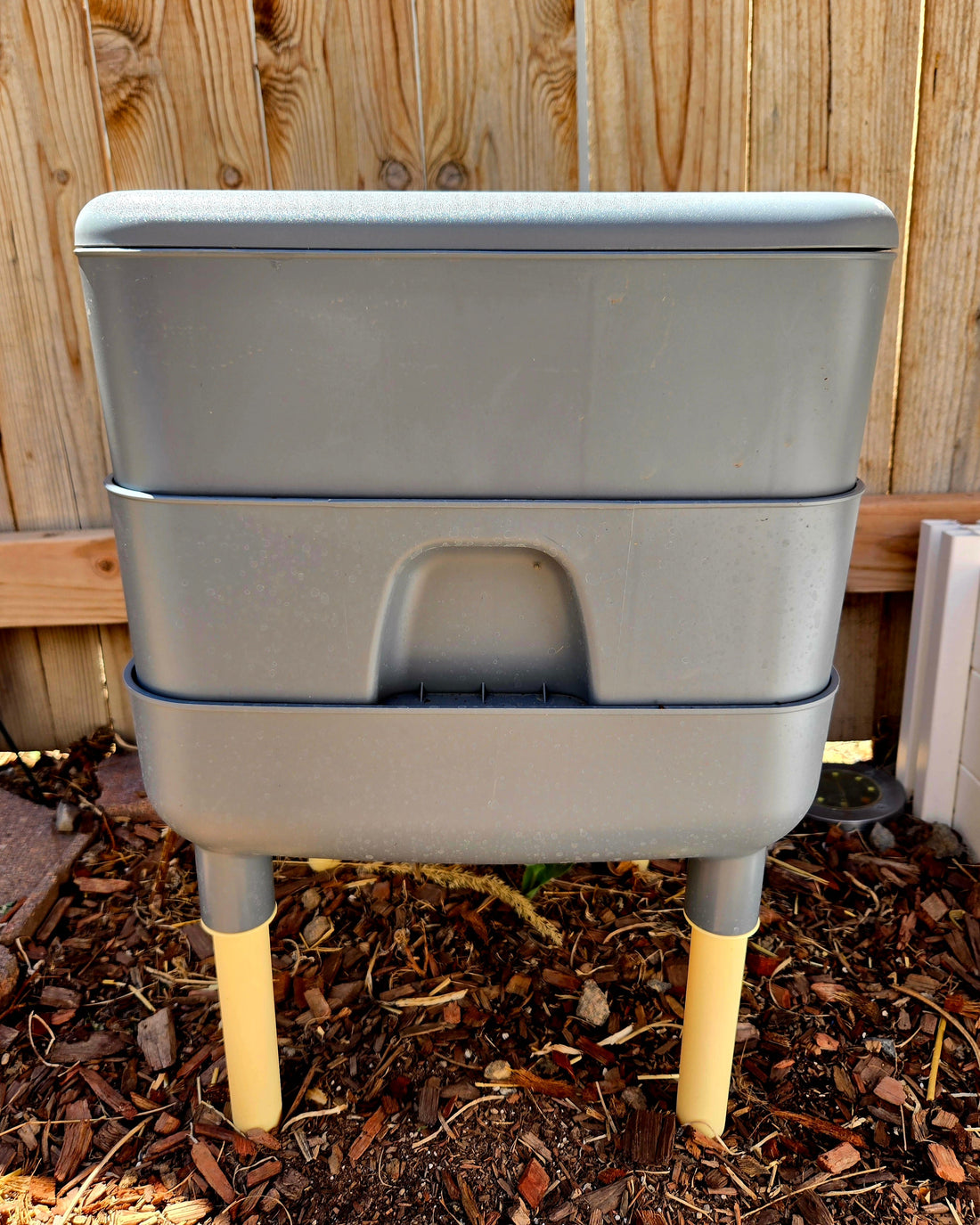
The Cutest Way to Compost: Start a Red Wriggler Worm Farm
Share
Tiny Farmers: How to Start and Care for a Red Wriggler Worm Farm
If you’ve ever wished for a magical little crew to turn your kitchen scraps into garden gold, meet the red wiggler worm (Eisenia fetida). These tiny farmers are one of the easiest (and cutest!) ways to reduce kitchen waste, create nutrient-rich compost, and boost your garden’s health—all without needing much space or effort. Let’s dig in!
Why Red Wigglers?
Red wigglers are nature’s composting champions. Unlike earthworms that prefer deep soil, red wigglers love hanging out in decomposing materials near the surface. They're small, mighty, and incredibly efficient—able to eat half their body weight in scraps every day! This makes them perfect for small-space composting, even if you live in an apartment.
How to Start Your Worm Farm
Starting a worm farm is surprisingly simple:
Start a Worm Farm-
1) Choose a container: You can use a plastic bin, wooden box, or purchase a ready-made worm composting bin. Make sure it has ventilation holes and a lid.

2) Prepare their bedding: Red wigglers love damp, shredded newspaper, coconut coir, or cardboard. Think soft and cozy—like a little worm spa!
3) Add your worms: About 1 pound of red wigglers is a great amount to start with (around 1,000 worms).

Feed them right: Red wigglers adore fruits, vegetables, coffee grounds, tea bags, and crushed eggshells. Avoid meat, dairy, and oily foods, which can smell bad and attract pests.
 © 2025 Feral Flavors LLC. All rights reserved.
© 2025 Feral Flavors LLC. All rights reserved.
Caring for Your Worm Family
Worm farms are low-maintenance. Check on them once a week:
Moisture: Their bedding should feel like a wrung-out sponge. Too dry? Lightly mist with water. Too wet? Add more dry bedding.
Temperature: Keep your farm between 55–80°F. They’ll slow down if it gets too cold and struggle if it gets too hot.
Feeding: Bury food scraps under the bedding to avoid flies. Feed a small amount at first and adjust as your worms get more active.
The Payoff: Worm Castings (aka Black Gold)
After a few months, you’ll start to notice a rich, dark, earthy-smelling material in your bin—this is worm castings! It's packed with nutrients and beneficial microbes that make your garden plants practically glow with health.
You can use worm castings by:
Sprinkling them around your veggies and flowers
Mixing into potting soil for houseplants
Brewing "worm tea" (a compost tea) to water your plants with an extra boost
Bonus: Reducing Waste Like a Pro
One of the best parts? A worm farm dramatically reduces kitchen waste. Instead of sending your scraps to the landfill (where they emit harmful methane gases), you're recycling them into something truly amazing. It's a small action that has a big environmental impact—and it all starts with a few little wrigglers.
In short: red wigglers are tiny, mighty composting heroes that make caring for the planet a little easier—and a lot cuter.
